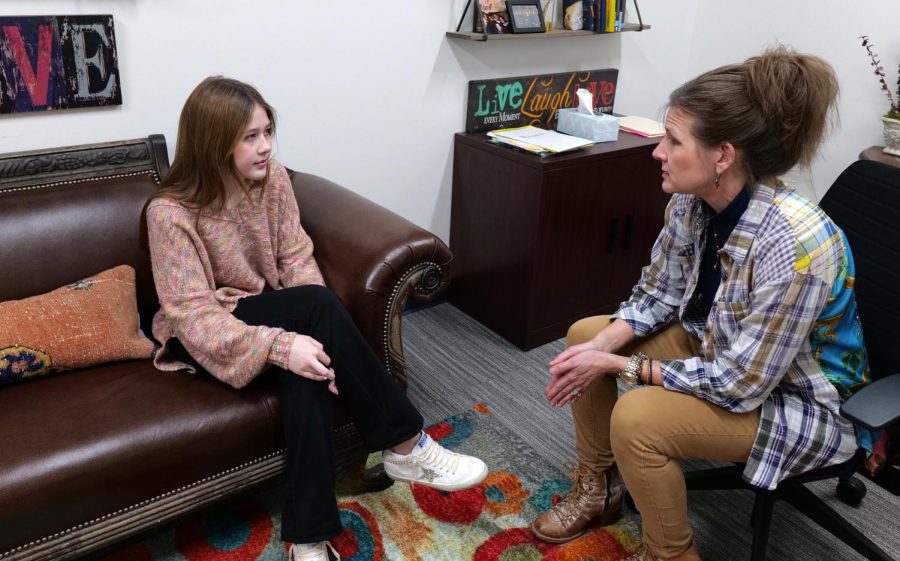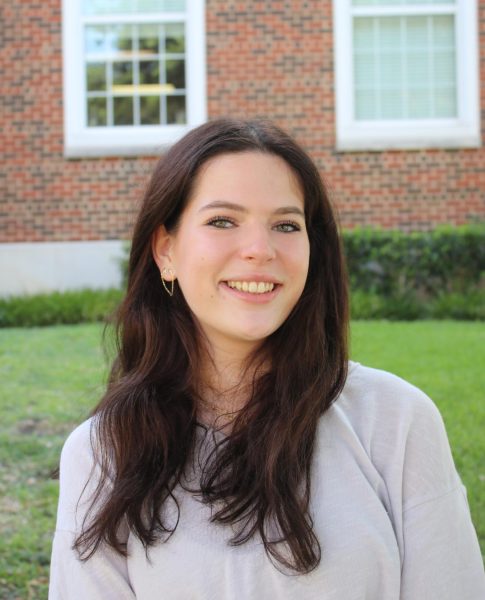Four years ago sophomore Amy Wilcox went to therapy for the first time.
“I have deep issues with mental illness and family that I am trying to work out,” she said.
She had never been before, but felt that it was time to make more of an effort to take care of herself. She wanted to move forward and work towards having a healthier mindset.
“Even though there are people in my life who support me and want the best for me, I think the most important growth comes from yourself,” Wilcox said.
In the four years since she first started going to therapy, Wilcox has come to appreciate it and sees it as an important step in maintaining one’s well being. She has seen great improvement in her mental health, which in turn positively affects other areas of her life.
“It’s a great place for someone to just talk about things in a safe space [and] to really process stuff,” she said. “No one knows you like you know yourself and it is a really great way to self improve.”
Despite Wilcox’s praise for therapy, research shows there has been and still is an overwhelming negative stigma around it. The American public started becoming aware of mental illness in the 1800s, shortly after the civil war. At the time, those who were mentally ill were often viewed as “insane.” In 1844, the Association of Medical Superintendents of American Institutions for the Insane, now known as the American Psychiatric Association, was formed. Its original goal was to promote psychosocial treatment for patients within a more humane environment.
Over the years, the field of psychiatry and mental health treatment has evolved, however, remnants of the original stigmas still remain.
“I think people just have a lot of misconceptions about what therapy is,” Ellen Taylor, a therapist at Sparrow House Counseling, said. “[They think it’s] laying on a couch and just talking about intense things. I think we should normalize it more and talk to people who went to therapy. [We need to] be more open about it and explain what it is and why it is helpful.”
Taylor grew up in the Park Cities and went on to study at Texas A&M University. She specializes in treating eating disorders, commitment therapy, depression and anxiety through biblical approaches. Taylor says there are various reasons to go to therapy from coping with severe disorders to learning life skills.
“I think it does not matter who you are and why you go to therapy because we all need a place to be understood and heard and feel safe to be ourselves,” Taylor said. “I think that everyone can benefit from therapy because it allows you to work on specific goals, achieve new things and learn more about yourself.”
Wilcox agrees and emphasizes that because of the different forms of therapy there is something for everyone. Wilcox herself goes to therapy one hour a week for individual therapy and two hours a week for group therapy.
“ I think that finding the right therapist and the right method is really helpful,” Wilcox said. “We all need it.”
Sophomore Hayden Wagner has benefitted from therapy, but has struggled to be open about it. Wagner was diagnosed with depression in sixth grade and her mom encouraged her to go to therapy.
“[I was embarrassed at first] if anyone found out they would know that I have been struggling and people have their opinions,” she said.
However, therapy has proven successful for Wagner and she has been able to stop taking anti-depressant medication. Taylor says it’s not uncommon for some patients to struggle to adjust to therapy at first, but emphasizes how helpful it is in the long run.
“You see a lot of people gain skills and ability to work through and process hard things,” she said. “I have seen [a lot of] people gain resilience.”
While professional therapy is one of the more popular choices, it is not the only choice. The school also has counseling services available for students, if they find therapy with a private company to be inaccessible.
“The goal and objective is to be a support whether it is a personal counselor or a school counselor,” crisis counselor Christen Armer said. “It is really expected to be non-judgmental, open, available, accessible and to help the person build and find skills to help with emotional and mental health.”
Armer says that while school counseling is not the same as private therapy, it is still a valuable resource for students who need it.
“We want to give [students] support and help students practice problem solving and coping skills.”
The Texas Education Agency does not allow students to have regular, scheduled therapy sessions with a school counselor, but Armer says she does not want this to discourage students from coming to see her and the other counselors. She stresses that acknowledging that one’s mental health needs improving is not something someone should be ashamed of.
“I think [therapy] gives anyone resource[s] to utilize,” Armer said. “It gives that person someone to process things with. The goal with a really healthy therapeutic relationship is to help the person develop tools and skills to help them ultimately.”




